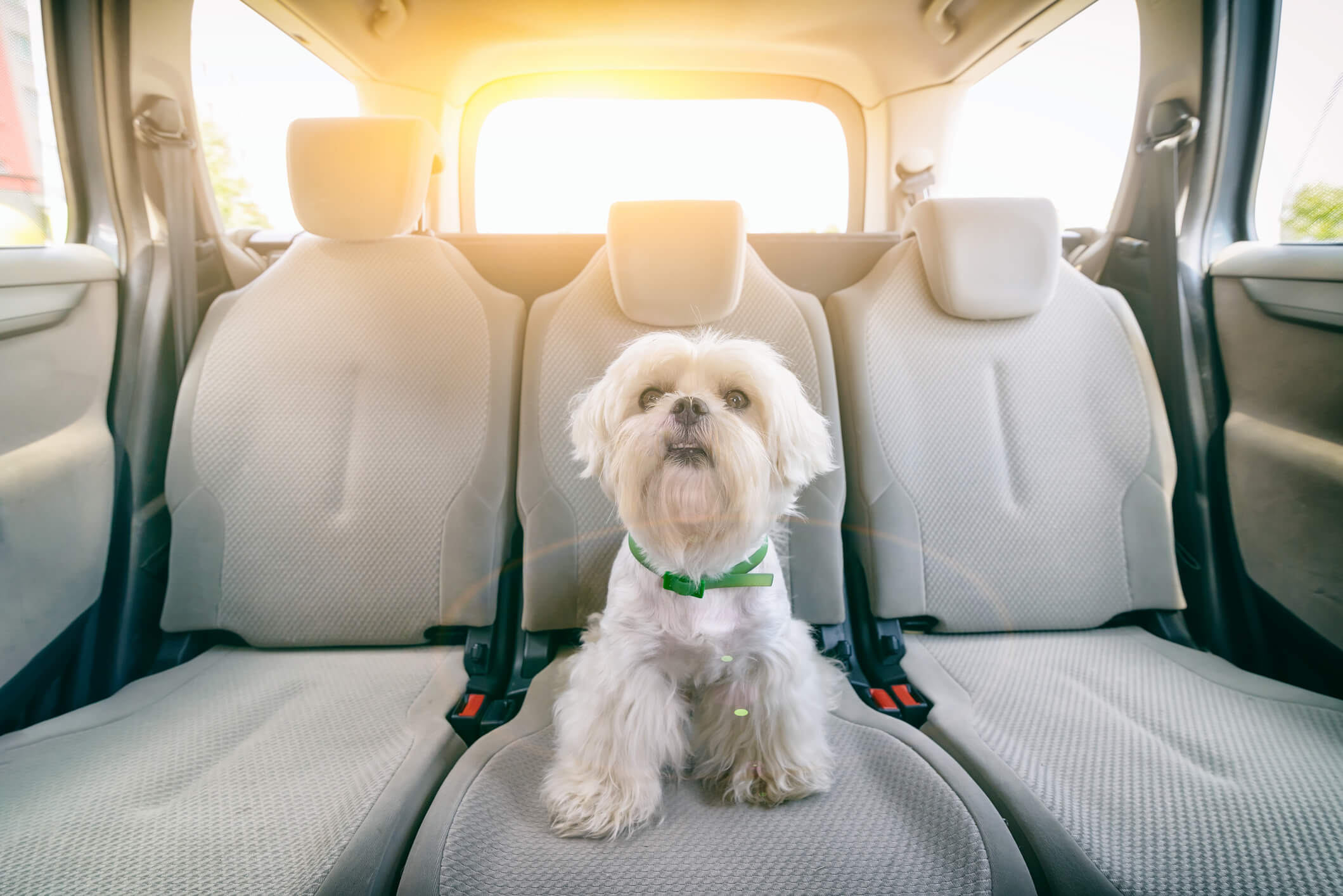
8 Tips for Making Dogs Less Nervous in the Car
There are two kinds of dogs: those who love car rides and those who absolutely despise them. Every pet parent wants their pup to experience what it’s like to feel the wind in their fur, tongue lolling to the side as they stick their head out the window. Unfortunately, many owners find their pups shivering and whimpering in the back seat, instead.
Fear not—car anxiety is something any pup can overcome! The following tips can teach dogs how to enjoy car rides.

- Desensitize your pup to the car: Desensitization involves exposing a dog to their fear triggers in small increments. Over time, the pet parent can slowly expose their pup to more parts of the car riding experience. Start by gently encouraging your dog to stand about 10 feet away from the car. Once they feel comfortable, allow them to approach your car all the way. From there, coax them into the back seat with the doors still open. Further steps include closing the doors, turning on the engine and eventually traveling short distances.
- Progress at the dog’s pace: When owners practice desensitization, it’s crucial they move on to the next step only when their dog exhibits calm behavior. Forcing a stressful situation could reinforce the dog’s car anxiety even more! Some dogs may feel comfortable enough to hop in the car within minutes, while others might take weeks. If necessary, go back a couple steps in the desensitization process until your pup appears calm. Always end sessions on a positive note so the dog is more willing to try again.
- Practice counter conditioning: Counter conditioning is when pet parents reprogram the dog’s emotional response to a fearful situation. In this case, owners would use praise, toys and treats to create a positive association with car rides. Counter conditioning goes hand-in-hand with desensitization. When your dog is able to calmly complete the next step, reward them so they learn car rides can be fun!
- Give your pup a calming supplement: In addition to treats and toys, a pet-friendly calming supplement can be very useful during these training sessions. The natural supplement contains highly effective herbs that can stabilize a dog’s mood and neurotransmitter levels. Calming supplements also typically have adaptogens like ashwagandha and eleuthero root, which help lower the stress response.
- Hang out in the car together: During the first few sessions, pet parents shouldn’t drive anywhere. Instead, spend some time in the back seat with the engine off and car doors open. Anxious pups should get used to simply being in the car before it starts to move. Keeping all the doors open will prevent the dog from feeling trapped and give them an escape route in case they feel too uncomfortable. Cuddle with your pup or play tug of war, lavishing them with praise all the while.
- Choose a fun destination: When your pup seems ready to drive with you, keep initial car rides short, such as rolling to the end of the driveway or riding around the block. Once your pup feels comfortable, you’re ready to hit the open road! Pick destinations your pup will love, like a nature trail, dog park or the beach. This can make dogs excited to jump into the back seat because they’ll anticipate a fun reward at the end of the ride.
- Use pheromones in the car: Pheromones calm anxious pups because they mimic the scent of a nursing female dog. They’re a great tool to use in the car once your dog has worked up the courage to travel outside the neighborhood. You can buy pheromones in a spray bottle or a diffuser that clips to your car’s air vent. There are special collars that emit pheromones, and owners can switch to this collar right before a car ride.
- Try a supplement for stress relief: For stronger cases of car phobia, one dose of a stress-relieving supplement can make car rides go a lot smoother. There are supplements specially designed for highly stressful situations like car rides, vet visits, new environments and loud noises. Herbs are blended together to create a mild sedative effect on dogs. These herbs can also relax the nervous system, which makes your pup feel calm. Administer stress-relieving supplements shortly before approaching the car if you have to drive somewhere and want your pup to be comfortable.
Some lucky owners will notice a change in their dog’s behavior overnight. Others will have to spend more time slowly acclimating their dog to car rides. The time it takes to overcome car anxiety depends on the dog’s prior experience with vehicles. Dogs who have gone through traumatic experiences may require help from a professional dog trainer. Don’t be afraid to ask for assistance if you need it!


